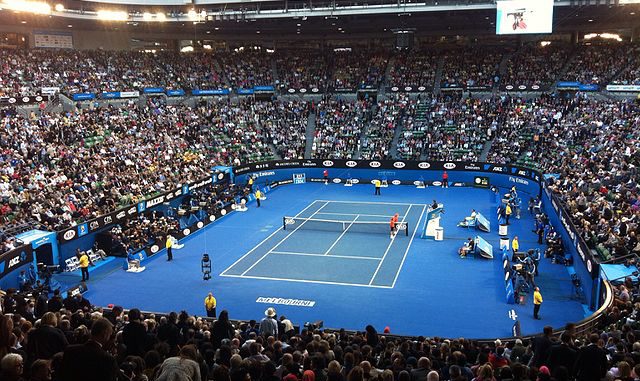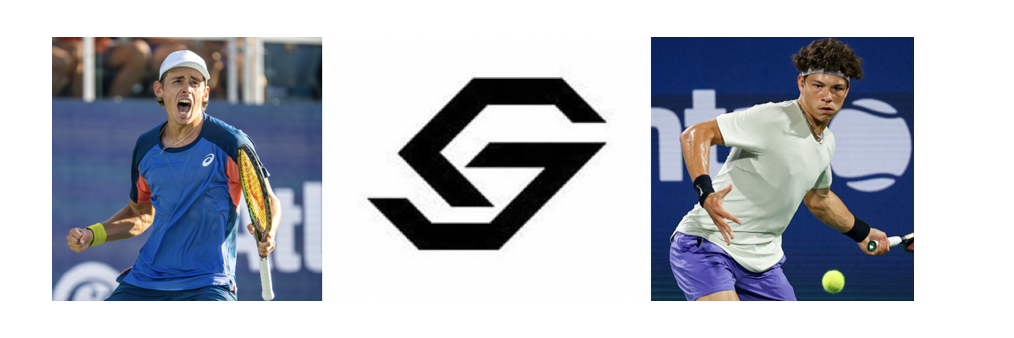
The Australian Open represents a wonderful time of year for tennis fans. While diehard supporters might pay attention to some of the tune-up tournaments that take place in early January, the two-week slam at Melbourne Park marks the real start of the year’s campaign to a lot of us. It’s our first chance to get a look at most of the world’s best players as they hit the ground for about 10 months of action to follow.
This year, the action has been about as exciting as ever. While we saw the No. 1 seeds fall early in both the men’s and women’s draws, there has been no shortage of storylines. Roger Federer became the oldest quarterfinalist at a major since Jimmy Connors in 1991 and promptly dispatched Mischa Zverev (the older brother of rising sensation Alexander Zverev) to advance to the semis. Venus Williams became the oldest women’s semifinalist of the Open era. We mentioned that Grigor Dimitrov is coming into his own and Rafael Nadal has had his most impressive run at a slam in years. Unseeded American Coco Vandeweghe knocked off three straight seeded players (including No. 1 Angelique Kerber) en route to the semis, and Serena Williams still looms large. It’s been a pretty exciting time Down Under.
But because a lot of tennis fans actually play the sport on a regular basis, it’s also interesting to look at tournaments like these with the hopes of improving your own game. We can’t all approach anything close to the pros’ level of play, of course, but we can relate to it in a way. Considering that, let’s look at a few lessons the Aussie Open has taught us.
You Can Always Keep Learning
This has been a tournament rewarding perseverance. We’ve seen the “old guard” on both the men’s and women’s sides holding the advantage over young up-and-comers for a long time. While we could well see some combination of Federer, Nadal, and the Williams sisters crowned champions, the youngsters are breaking through after years of falling short. Vandeweghe, Dimitrov, and Milos Raonic are just a few of the young players who have made headlines this fortnight.
Fans should take this to heart as an indication that even regular players can keep improving and upping their game. This is especially worth taking to heart these days, as it’s never been easier to find lessons. Modern search tools allow you to look for a coach in your own area using Play Your Court so you can find one that is tailored to your needs as a player and your convenience with regard to schedule and location. You may not be at the professional level, but don’t just play—take instruction and learn, and you can keep seeing progress when you may have felt you’d hit your peak.
Old School Tennis Is Alive
For fans who like to play the game, progress toward a slightly less accessible version of tennis has been evident for the past several years. The Australian Open site is reporting men serving 140 mph and reaching a level of fitness that allows them to cover the baseline like never before. We’re also seeing more women striving to catch up to the raw power of Serena Williams. The speed and strength of the baseline-to-baseline game has never been more impressive, and a sport that once seemed as if it was played among great but not otherworldly athletes now seems more superhuman.
That said, we’ve seen some glimpses of the old school game that should give the average player some optimism. In particular, it was seen in Mischa Zverev’s game. Tennis.com credited the journeyman German with having taught an old school master-class in defeating world No. 1 Andy Murray with a relentless onslaught of serve-and-volley approaches. Zverev played a methodical, technical game that frustrated one of the most unshakable athletes on tour. It was a good reminder for all of us that intelligence, strategy, and technique can still go a long way in this sport.
Reading Conditions Matters
This is not a first, but we may have heard commentators discuss conditions more than ever before at this year’s Aussie Open. We’ve heard about the breeze effectively simulating a “downhill” slope from one end of the court to the other. We’ve also heard about the new Australian Open balls playing particularly quickly and as always there’s discussion about which of the courts are quicker and why. It’s impossible to know how much these conditions affect any given match, but the more you watch this tournament the more you understand the intricacies under consideration at the highest level. Learning how to recognize and take advantage of these kinds of details is a nice goal for any serious player.
These are just a few things to keep in mind. Now we’ll just have to see what further lessons the last few rounds have in store.


Nice one.